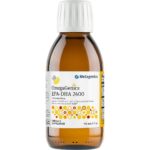Which of these happy childhood memories do you have?
- Decorating Christmas cookies with brightly coloured icing.
- Dying easter eggs different, fun colours.
- Eating brightly coloured cereal like Fruit Loops or candy like M&M’s.
Do you know what all of these things have in common?
They all require the use of artificial food dyes!
Have you ever wondered why certain food additives and dyes are banned in some countries, but not the USA or Canada?
Today, I wanted to shed some light on food dyes and how they may be holding you back from fat loss and throwing your hormones out of whack.
Food dyes are often added to enhance the visual appeal of processed foods and provide no nutritional value. They can however significantly hinder your hormonal balance.
The main artificial food dyes that can be found on processed food labeled are Red 40, Red 3, Yellow 5 (Tartrazine), Yellow 6, Blue 1, and Blue 2.
Foods such as cereal, ice cream, candy, and toaster pastries usually contain all 6 of these most commonly used artificial food colours.
Health Concerns Associated with Food Dyes:
- Closely linked to ADHD and hyperactivity in children.
- Artificial dyes derived from petroleum can lead to immune responses, potentially provoking autoimmune conditions. Removing petroleum can help improve skin rashes.
- Food dyes reduce red blood cell count and glutathione levels (which is needed for proper detoxification).
- They can increase Insulin Resistance.
- Leptin is the hormone that tells your brain when you’ve had enough to eat. Food dyes can disrupt the proper functioning of leptin, making it difficult for your body to signal fullness, leading to overeating and unwanted weight gain.
- They can also disturb the endocrine system, which regulates many hormones in your body. This imbalance can lead to mood swings, increased stress, and weight retention.
- Many food dyes are known to cause inflammation in the body. Chronic inflammation can make it almost impossible to lose weight and can even lead to various health issues.
- Increases intestinal permeability aka “leaky gut”.
- Red 3 and Yellow 5 have been found to disrupt Thyroid function, slow down metabolism and leave you feeling sluggish.
- Yellow 5 can increase irritability, restlessness, and disrupts sleep. It can also affect liver and kidney cells.
- Yellow 6 is an Xenoestrogen, which is a hormone disruptor that has Estrogen-like effects.
- Blue 1 has negative effects on the nervous system and increases inflammation.
- Red 40, Yellow 5, and Yellow 6 have been discovered to contain benzidine, a known carcinogen.
The list is long and can go on forever.
Within the last 50 years, the amount of synthetic dye used in foods has increased by 500%!
Food dyes are used in thousands of foods, including soda, breakfast cereals, candies, snack foods, baked goods, frozen desserts, and salad dressings. Just to name a few.
How can you limit your consumption of food dyes?
- Eat REAL, single ingredient foods that don’t have labels. Strive to eat unprocessed, whole food that does not contain artificial food dyes or other synthetic food additives.
- Get in the habit of reading the label on everything! When choosing to eat processed foods, look at the ingredient list to see if there are any food dyes in it. Try to stay away from those foods and eat primarily foods that are coloured by natural ingredients. Another rule of thumb is you should be able to pronounce and know what each ingredient is. If you don’t recognize it and can say it, your body probably won’t recognize it either.
Remember, your health is our top priority. If you have any questions or need personalized advice on how to navigate the world of fat loss in a healthy, sustainable way, please don’t hesitate to reach out to us.






